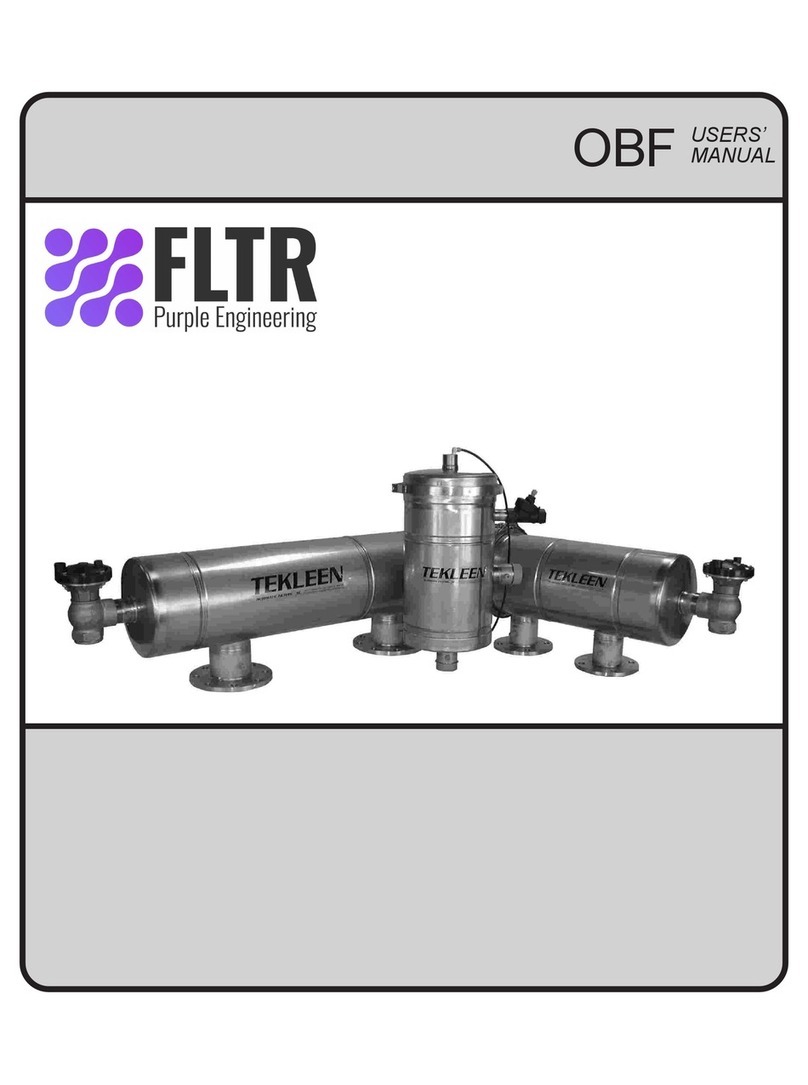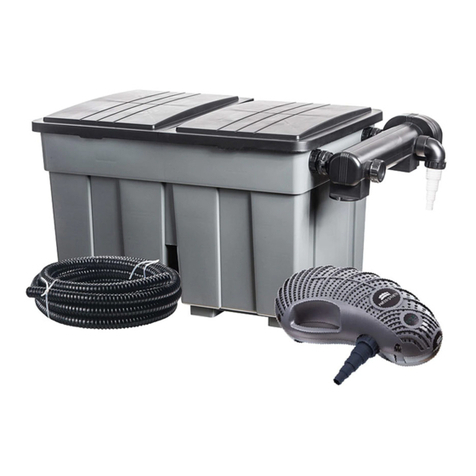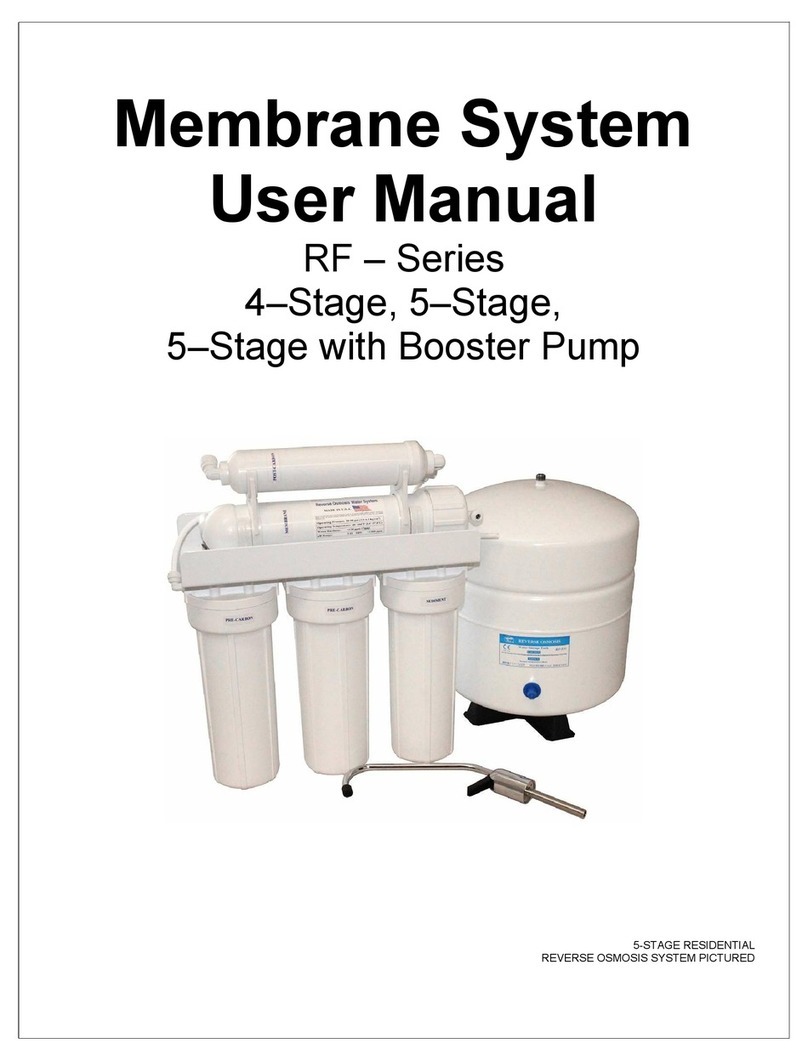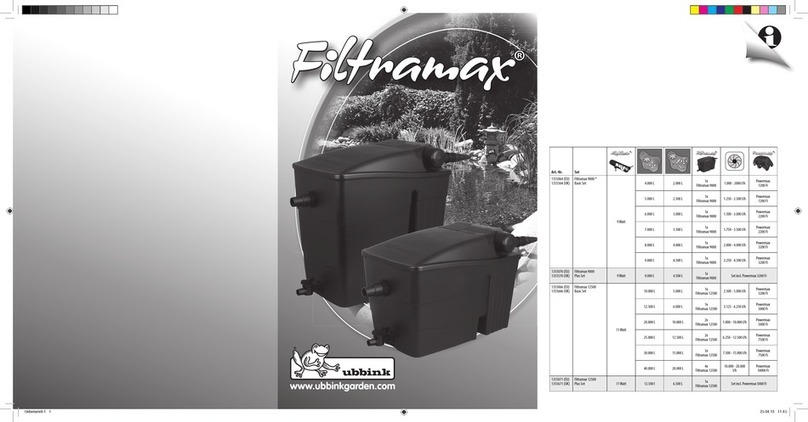
The Solo Pure Water System Operation and Maintenance Manual - 5
12. Troubleshooting
11. Storage
1. Low tap pressure is one of the most common causes
of low ow of pure water. Source water pressure is the
primary driver of system performance. Even sources that
appear to have plenty of ow out of the tap may not have
enough PSI to push water through the RO membrane.
Ensure that the tap pressure is sucient using a pressure
gauge ( TA-PG Sold Separately). Trying a dierent
source may lead to better performance. Also check all
hoses (incoming and outowing) for kinks or blockages,
Do not allow the lters or system to freeze. Failure to
do so could result in damage to your Solo system. Do
not allow the RO lter to dry out. A dry RO membrane
will develop cracks which allow more dissolved solids
to pass through. abc recommends that you run water
through your system once every 2 weeks or so, not only
to help keep your lters moist but to also wash out any
microorganisms that might try to grow in your lters. The
Solo needs to stay moist but does not need to be full of
water.
abc strongly recommends ushing out the system once
every 2-4 weeks to ensure the maximum lifespan of the
lter. This will ensure that the lter membrane does not
dry out and will reduce the chance that biological growth
will foul the lter elements while in storage.
If periodic ushing is not feasible, we recommend that
users seal the system by attaching the bypass hose to
the system inlet and then attach a closed shut o valve
to the system outlet. This will reduce the chance that
the lter dries out when in storage. Wrap lters tightly in
plastic wrap or plastic bags and then seal with tape.
Do not allow the system to dry out.
Store system indoors over the winter. Do not allow it to
freeze. Failure to do so could result in damage to your
Solo system. After the system has been stored this way,
it will need to be ushed thoroughly before use. Leaving
the system sealed for extended periods of time can
lead to biological fouling, which is why we recommend
periodic ushing.
Storage - Short Term (2-4 Weeks)
Low Pure Water Flow Out Of The Brush
Storage - Long Term (Winterizing)
especially hose reels that are wound too tight. Trying
a larger diameter hose (½”) or a shorter hose length
between the system and the tap can also improve ow.
Adding a pump, such as the ABC boost pump (WF1000-
BP Sold Separately), can help compensate for low source
pressure. Do not exceed 120 PSI when using a pump.
2. Mineral fouling of the RO membrane will lead to
reduced pure water production from your system.
Processing water through the RO membrane without
enough (or any) bypass ow will lead to increasing
mineral concentration within the RO housing. In minor
cases, this will result in a temporary drop in production
from the RO membrane. Flushing the excess minerals
from the housing will return the lter to normal production
rates if no fouling has occurred. In extreme cases the
mineral buildup will permanently reduce the ow rate of
the lter. These cases can only be xed by replacing the
lter.
3. Biologic fouling is another potential cause of reduced
pure water production from the RO lter. Algae, bacteria
and fungi can land and grow on the surface of the RO
membranes. These organisms eventually block o
pores in the membrane leading to reduced production
levels. Letting lters sit for long periods of time without
running any water through them increases the chances
of biological fouling. After long term storage, running a
series of long ushes will often return the RO membrane
to normal production levels. Fully open the bypass hose
and then shut o your system’s pure water outlet. Run
it like this for 10 minutes and then open your pure water
outlet and restrict your bypass to its normal running
setting. Test the water coming out of the RO (not the
bypass water). If levels are as expected, use the system
like normal. Doing this ushing process 2 or 3 times may
be required to return to normal production levels.
4. Expect decreased production rates when running your
RO with colder source water. The ideal temperature for
source water is 77°F. You can expect around half the ow
for water at 50 degrees that you would get at 75 degrees,
even if both sources are at the same PSI. Use your TDS
meter to measure the temperature of your source water
to determine if this is the cause of lowered ow rates.
5. Leaks in the system and the pole tubing can release
pressure and take ow away from the jets in your brush.
A couple of small leaks in the pure water lines can cut
pressure to the jets in half. Read the “leaks” section
below for more information on eliminating leaks in the
system.
























